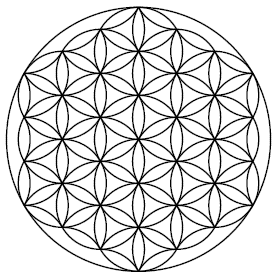Closed. This question is opinion-based. It is not currently accepting answers.
Want to improve this question? Update the question so it can be answered with facts and citations by editing this post.
Closed 4 years ago.
I m interested in creating poster-sized images that contain repeating patterns, similar to the two (public domain) images below, the Flower of Life and a Penrose tiling:


My questions:
- How do people usually create images like these on a computer? I m hoping the answer isn t, "Open Adobe Illustrator and guess at intersection points," since such points can be defined mathematically. But I also imagine that not everyone with an interest in geometric patterns is also familiar with programming.
- What is the best environment for creating such images? In particular, what s the best way to get high-resolution images out of Java, Python, Processing, etc? Or, is Mathematica the best tool?
Actually calculating the points and doing the math isn t the hard part, in my mind (at least, it s not the focus of this question). I m interested in the best way to get a high-quality visual product out of a program.
